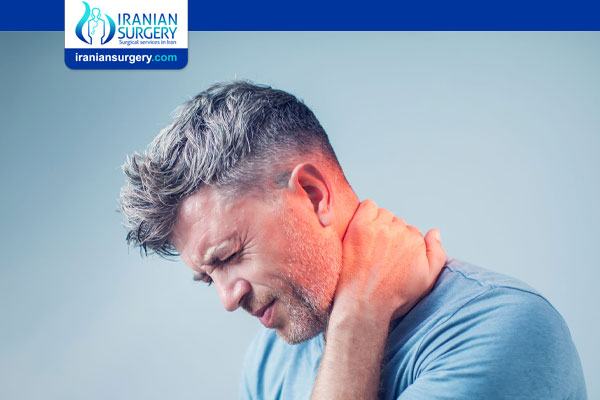What Causes Cervical Spinal Stenosis
Narrowing of the spinal canal and/or the spinal nerve root passages in your neck is called Cervical spinal stenosis. When this narrowing occurs, your spinal cord and/or nerves may become compressed and cause symptoms such as pain, numbness, tingling and weakness in your neck, shoulders, and extremities. If cervical spinal stenosis causes spinal cord compression, your doctor may refer to the condition as cervical myelopathy.
What Causes Cervical Spinal Stenosis?
The backbone (spine) runs from your neck to your lower back. The bones of your spine form a spinal canal, which protects your spinal cord (nerves).
Read more about : Spinal fusion surgery
Some people are born with a small spinal canal. But most spinal stenosis occurs when something happens to narrow the open space within the spine. Causes of spinal stenosis may include:
. Overgrowth of bone. Wear and tear damage from osteoarthritis on your spinal bones can prompt the formation of bone spurs, which can grow into the spinal canal. Paget's disease, a bone disease that usually affects adults, also can cause bone overgrowth in the spine.
. Herniated disks. The soft cushions that act as shock absorbers between your vertebrae tend to dry out with age. Cracks in a disk's exterior may allow some of the soft inner material to escape and press on the spinal cord or nerves.
. Thickened ligaments. The tough cords that help hold the bones of your spine together can become stiff and thickened over time. These thickened ligaments can bulge into the spinal canal.
. Tumors. Abnormal growths can form inside the spinal cord, within the membranes that cover the spinal cord or in the space between the spinal cord and vertebrae. These are uncommon and identifiable on spine imaging with an MRI or CT.
Read more about : Vaginal Hysterectomy
. Spinal injuries. Car accidents and other trauma can cause dislocations or fractures of one or more vertebrae. Displaced bone from a spinal fracture may damage the contents of the spinal canal. Swelling of nearby tissue immediately after back surgery also can put pressure on the spinal cord or nerves.
Things To Avoid with Cervical Spinal Stenosis
Pain is the body’s way of telling you that something is wrong and needs your attention. Those living with a spinal stenosis know this too well and constantly being in pain leads to the detriment of their overall health and well-being. People with this condition tend to wait and hope that it will go away on its own, but that rarely happens.
According to studies, over 47% of those above 60 years of age have reported symptoms of spinal stenosis such as neck pains, tingling of the arms and legs among others. While age is a contributing factor to getting the condition, there are other factors that may cause spinal stenosis.
You may have started doing the recommended exercises, which you hoped was enough, but the pain doesn’t seem to fade. Managing spinal stenosis calls for delicate balance between what you should and what you should stay away from.
Don’t Keep Waiting for it to Disappear
If you think spinal stenosis is just like any other back pain that goes away on its own, you are wrong. The condition is quite different compared to other causes of back pain such as lifting heavy loads and poor sitting posture. One of the condition’s characteristics is that it worsens with time if you don’t try any medically proven remedies. The fact is that it will never just go away without any intervention since it is termed to be a progressive condition.
That said, you aren’t limited to what you can do to minimize the condition’s development. Specific recommended exercise programs are great for improvement of mobility and reduction of both back and leg pain. These remedies are essential since they help improve muscle strength to walk better without enduring as much pain as before.
Don’t Focus on the Inflammation
Spinal stenosis symptoms tend to worsen the more you walk without treating it since the leading cause is a contraction of the spinal cord, which irritates the leg nerves. The irritation of the terms causes inflammation, and so this should be part of the treatment. Using medication dedicated to anti-inflammation is only a temporary solution and should follow other spinal stenosis treatments too.
Solely relying on anti-inflammatory medication can make your symptoms worse and limit mobility with time. It is vital to make changes to your spine’s biomechanics for improvements of your spine’s movements. Accomplishing this can be through both exercises and postural correction.
Limit Flexion Exercises
Prescription of flexion exercises has been a critical element for patients with spinal stenosis for decades. The exercises mainly bend the spine forward, increasing the diameter of the spinal canal, taking pressure off the nerves helping with less irritation.
It is important to limit yourself to this exercise and add the sustained standing lumbar extension exercise. This bending backward exercise’s main benefit is moving your spinal discs away from the spinal canal and nerves, giving them more space to function correctly.
Stop Focusing on Surgery
Believing that surgery solves everything is not the best way to look for solutions. It is not always the case for spinal stenosis since surgery can sometimes only make minimal improvements to the conditions. Non-intrusive methods such as physical exercises and other medications can go a long way to improving the state of your condition.
Remaining vigilant about what you do and staying off certain things will provide you with a smooth experience as you deal with spinal stenosis.
Source:
https://www.mayoclinic.org/diseases-conditions/spinal-stenosis/symptoms-causes/syc-20352961
https://southernpainclinic.com/blog/things-to-stop-doing-if-you-have-spinal-stenosis/


